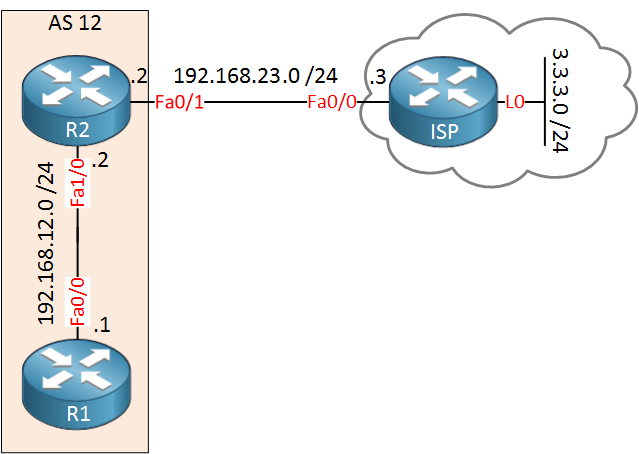Hello Sean
In general, it’s considered best practice to inject a static route on the router closest to the destination network. This is mainly because it reduces the chance of routing loops and ensures the most efficient path to the destination network. In the topology in the lesson, this would be R2, because that’s the closest router to the destination (the Internet) that you as an enterprise have control over.
First of all, you would issue the redistribute static command not the redistribute connected command as you suggest. The latter only redistributes directly connected networks, while the former redistributes static routes. Since the default route in this case is a static route, you must use the former command.
Having said that, if you issue the default route on R1, that would work. However, the problem here is that you are introducing recursive routing. This requires more CPU cycles to determine the exit interface, and this would be the case on all other routers in the topology as well, if there were more than just two. So although this would work, it is not ideal. Search for “recursive routing” in the lesson on IP routing to find out more about this phenomenon.
It doesn’t matter as far as EIGRP sharing the information is concerned. No matter where you inject the route, a stable EIGRP topology will correctly route the traffic. It does matter however as far as recursive routing goes, as mentioned, as well as in the case of a failure, which was your next question:
If the router that died was the only one advertising the default route, then the route will be removed from the routing table of the other routers and they will not be able to reach the network unless there is another route to it in their routing tables. This is another reason why we want to inject default routes as close to the destination as possible. Take a look at the diagram again:

If you inject the default route at R1 as you suggest, R2 will learn of the default route from R1. If R1 fails, R2 loses its default route. This means that it can no longer send traffic to the Internet, even though its connection is still up! So here you have two points of failure. If R1 fails, the whole network’s default route fails. If R2 fails, you have no physical route to the destination.
By placing the static default route on R2, and injecting it into EIGRP on R2, you have only ONE single point of failure rather than TWO. Does that make sense?
I hope this has been helpful!
Laz